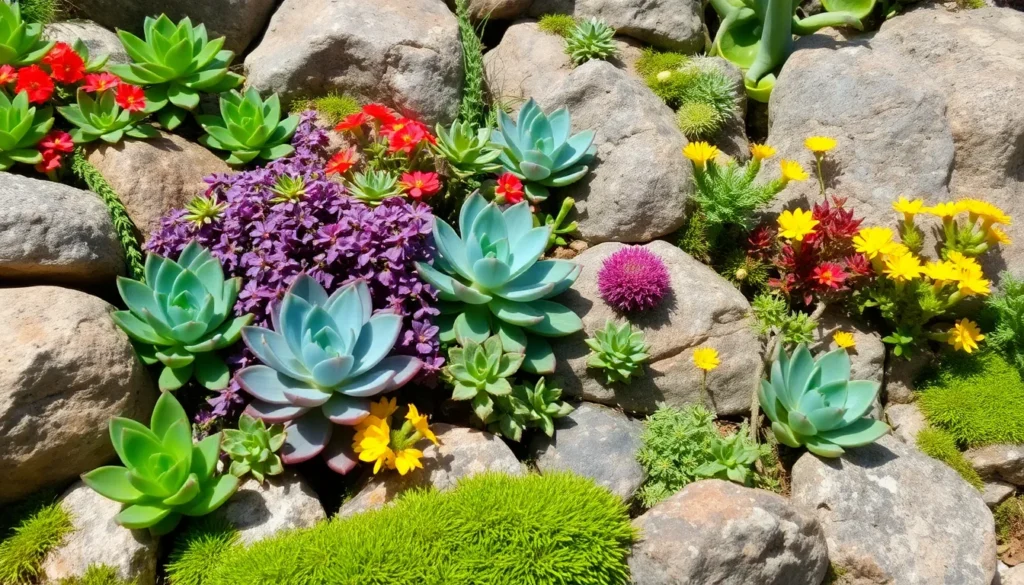Imagine transforming a mundane corner of your garden into a captivating landscape that echoes the serene beauty of nature’s rugged terrain. Rock gardens, with their harmonious blend of stones and resilient plants, invite both tranquility and an artistic touch to any outdoor space. Whether you’re a seasoned gardener ready to embrace a new challenge or a beginner eager to dip your toes into the world of horticulture, crafting a rock garden offers a rewarding experience that marries creativity with practicality. This endeavor not only enhances your garden’s aesthetic appeal but also provides a habitat for an array of plants that thrive in less-than-ideal soil conditions.
In this article, we will guide you through six common mistakes to avoid when creating your own rock garden, ensuring your efforts yield a stunning and sustainable masterpiece. From understanding the importance of choosing the right location to selecting hardy plants that will flourish amidst rocky terrain, our insights aim to equip you with the knowledge needed to succeed. You’ll discover how to strategically place rocks for natural drainage, how to integrate different textures for visual interest, and how to maintain your garden so it continues to thrive season after season. By the end, you’ll feel empowered to create a rock garden that not only reflects your personal style but also stands as a testament to the beauty and resilience of nature itself.
Choosing the Perfect Site

When selecting the site for your rock garden, consider the natural features of your landscape. Look for areas that naturally slope or have good drainage, as these mimic the conditions where alpine plants thrive.
Sunlight is crucial for most rock garden plants, so choose a site that receives at least six hours of direct sunlight per day. If your garden is in a shadier location, opt for shade-tolerant plants like ferns and hostas.
Soil quality is another important factor, and it’s essential to provide well-draining soil to prevent root rot. You can amend heavy clay soils with sand or gravel to improve drainage.
For those with more experience, consider the microclimates within your garden space. Areas near walls or buildings can create heat traps, ideal for more delicate or heat-loving species.
Selecting Suitable Rocks and Stones
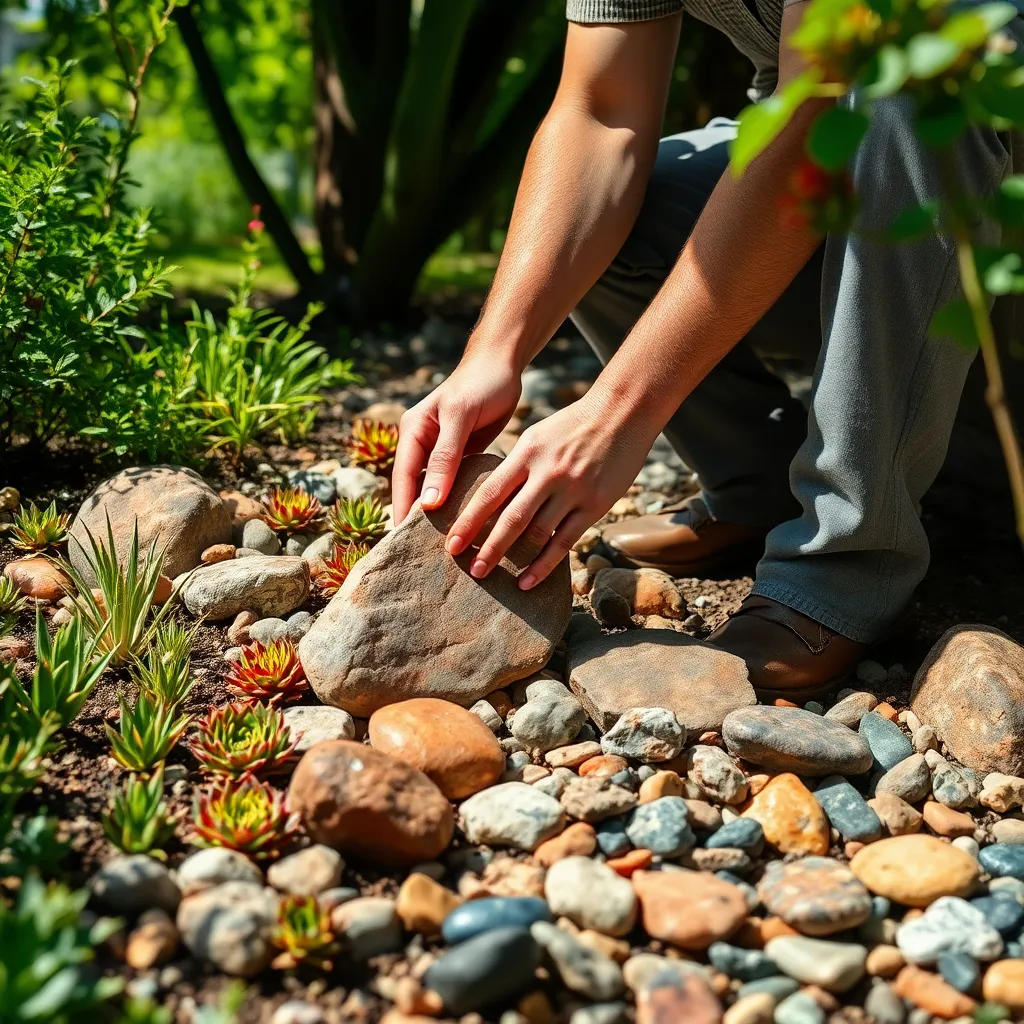
When selecting rocks and stones for your rock garden, it’s essential to consider their size and texture. Larger rocks can serve as focal points, while smaller stones can fill in spaces and add detail to the overall design.
Consider the color of the stones as it can influence the aesthetic of your garden. Lighter-colored rocks can make your garden appear larger and more open, while darker stones can create a cozy, intimate feel.
It’s also important to choose rocks that are native to your area, as they will blend more naturally into your landscape. Local stones are often more cost-effective and environmentally friendly, reducing the carbon footprint associated with transporting non-native materials.
For a more dynamic appearance, incorporate a variety of shapes and sizes within your rock garden. Flat stones can be used to create pathways or terraces, providing additional structure and functionality to your garden space.
Understanding Soil and Drainage Needs
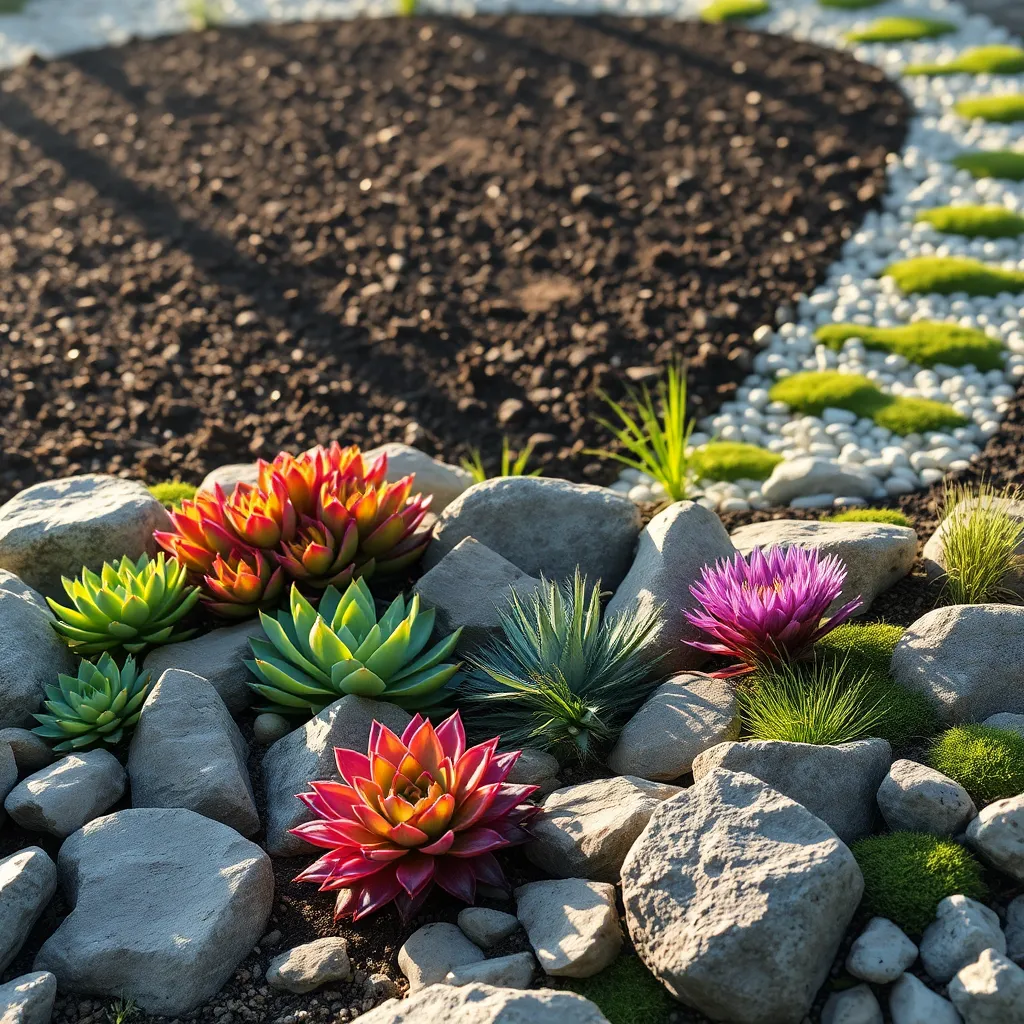
Understanding the soil and drainage needs is crucial when creating a thriving rock garden. Rock gardens often require well-draining soil to mimic the natural habitats of alpine plants and succulents.
Well-draining soil can be achieved by mixing equal parts of sand, gravel, and organic matter like compost. This blend allows water to flow through quickly, preventing root rot and ensuring that plants do not sit in waterlogged soil.
For those in regions with heavy clay soil, consider amending it with additional sand and small gravel. These materials will help break up the clay, improving both drainage and aeration around plant roots.
It’s also wise to elevate your rock garden slightly, creating a gentle slope that encourages water to drain away from plant roots. This can be done by building up the soil and positioning larger rocks strategically to guide water flow.
Incorporate a layer of mulch or small stones on the surface to help retain moisture while still allowing for proper drainage. This layer will also help in reducing weed growth and maintaining soil temperature.
Regularly check your garden’s drainage by watering lightly and observing how quickly the water disappears. Adjust soil composition as needed to ensure optimal drainage and plant health.
Picking Ideal Plant Varieties
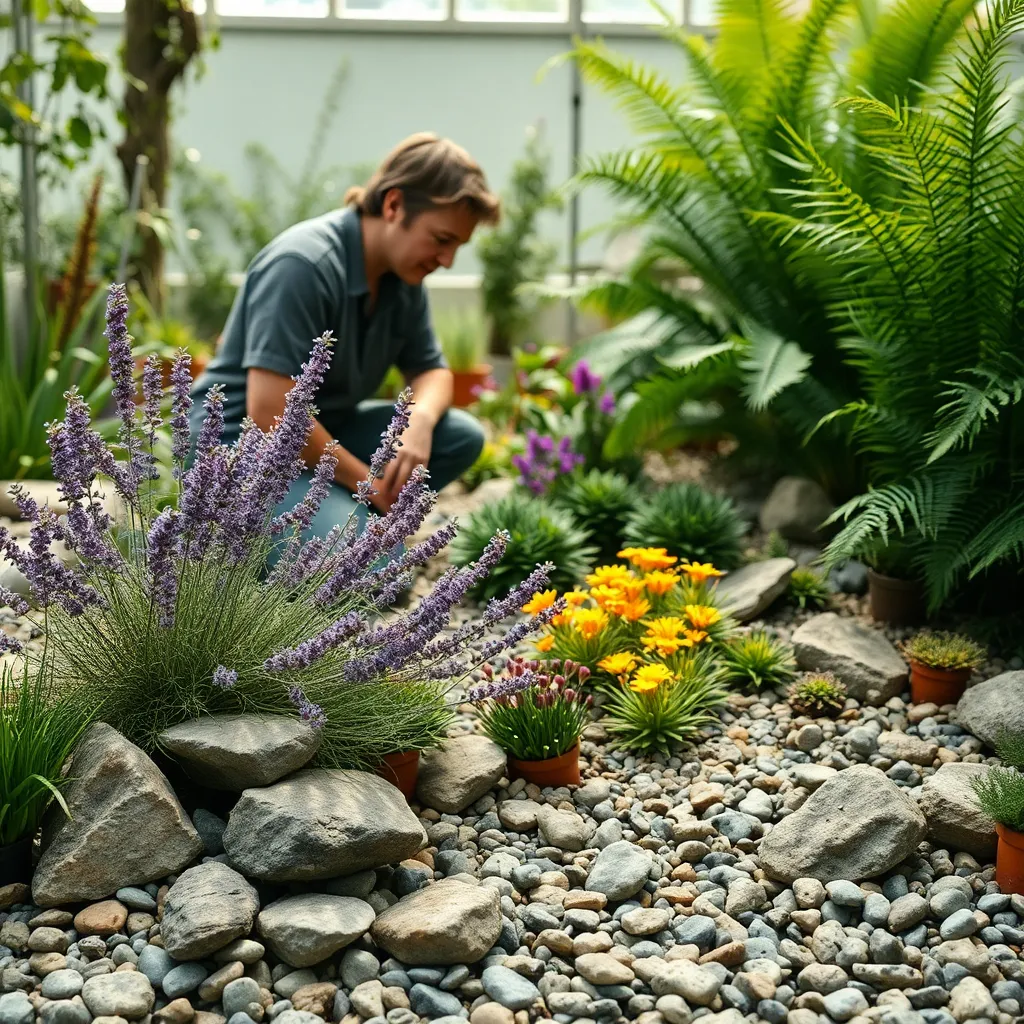
In choosing plant varieties for your rock garden, it’s essential to consider species that thrive in well-drained soil conditions. Succulents and alpine plants are popular choices as they naturally adapt to rocky environments and require minimal watering.
When selecting plants, pay attention to the climate in your area to ensure compatibility. For example, sedums and sempervivums are excellent for colder climates, while lavender and rosemary are better suited for warmer regions.
Opt for a mix of ground covers, perennials, and shrubs to create a visually appealing and dynamic rock garden. Ground covers like creeping thyme provide a lush carpet effect, while perennials like dianthus add vibrant bursts of color.
Experiment with different textures and colors to enhance the aesthetic appeal of your rock garden. Silver foliage plants like artemisia can contrast beautifully with the darker greens of junipers, creating a striking visual impact.
Arranging Rocks for Aesthetic Appeal
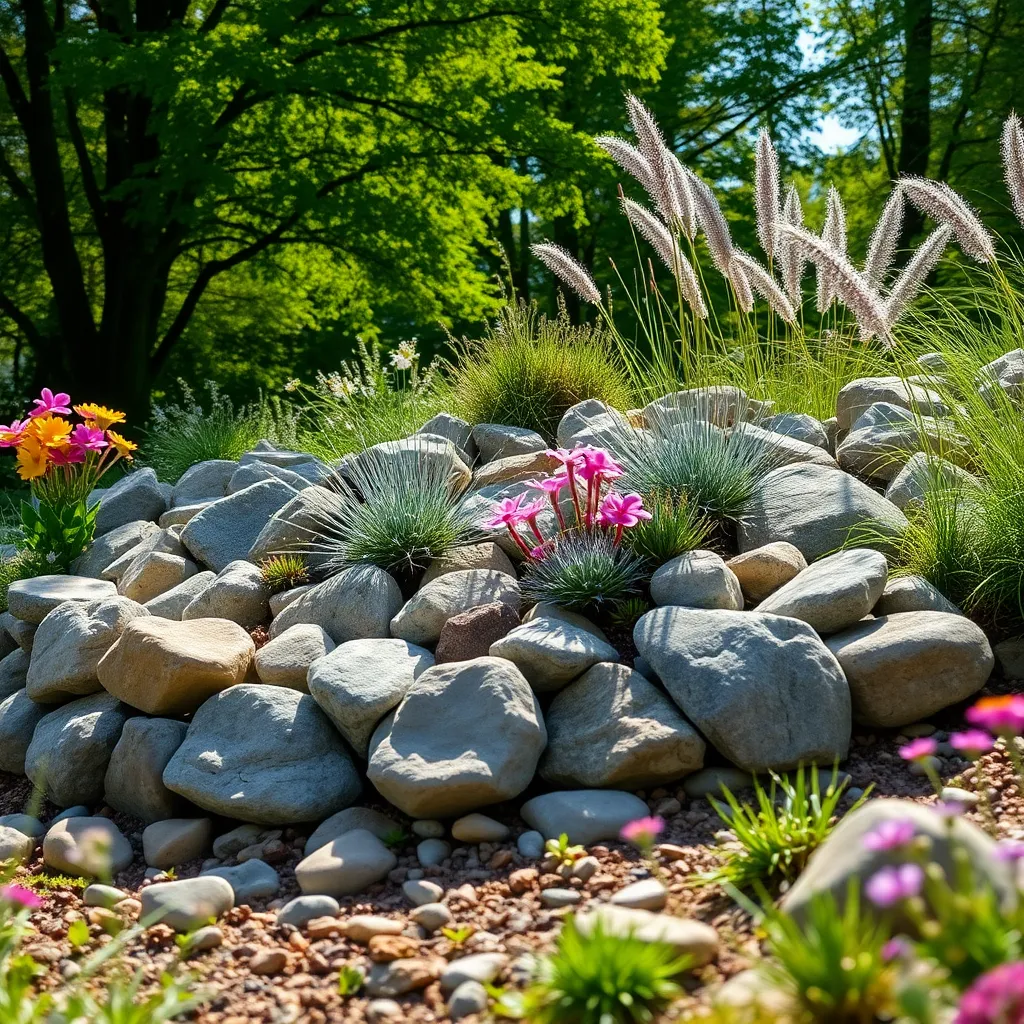
Arranging rocks in your garden can transform a simple space into a visually stunning landscape. Begin by selecting rocks of varying sizes and textures to create a natural look, as diversity in rock choice adds depth and interest to your design.
Consider the natural flow of your existing landscape when positioning rocks. Placing larger rocks at focal points and using smaller stones to create pathways or borders can enhance the garden’s overall structure.
Ensure stability by partially burying rocks into the soil, which prevents shifting over time. This technique not only keeps your arrangement secure but also gives the appearance that the rocks are a natural part of the landscape.
For advanced gardeners, incorporating rocks with moss or lichen can add a touch of age and authenticity. Regularly misting these rocks with water can help maintain the growth of these natural additions, offering a more vibrant and lived-in feel to the garden.
Maintaining Your Rock Garden Year-Round
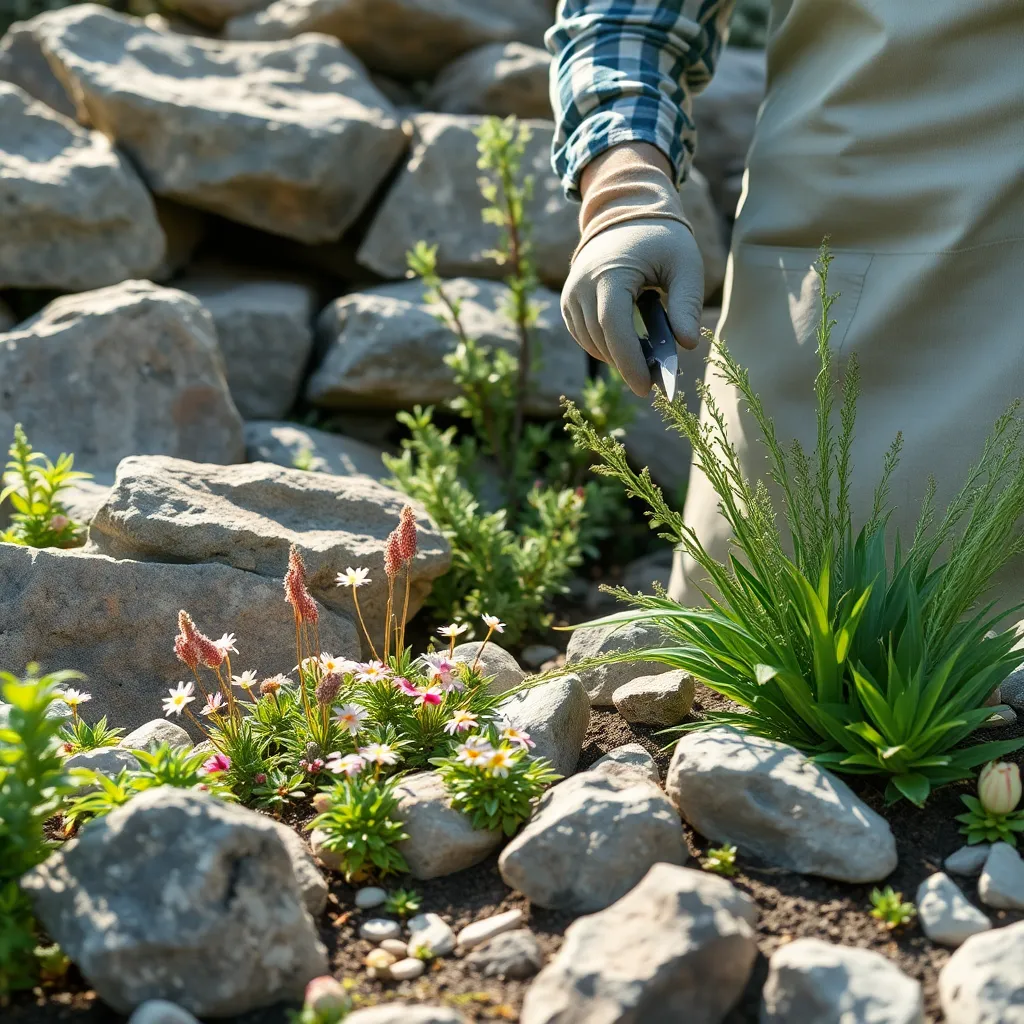
Maintaining a rock garden year-round involves consistent care and observation. Start by regularly checking for weeds, as they can quickly detract from the beauty of your garden; remove them gently to avoid disturbing the rocks and plant roots.
Incorporating a mix of drought-tolerant plants is essential for a low-maintenance rock garden. Choose plants like sedums and sempervivums, which thrive in well-drained soil and can withstand dry spells, making them perfect for rock gardens.
Watering is crucial but should be done judiciously. In general, rock garden plants require less water than traditional garden plants; water deeply but infrequently to encourage deep root growth.
Consider enhancing your garden’s health by adding a thin layer of mulch around plants. This not only helps retain moisture but also suppresses weed growth and insulates plant roots from temperature extremes.
As seasons change, adjust your care routine to suit the climate. In winter, protect sensitive plants by covering them with burlap or moving them to sheltered areas if they’re in pots.
For those seeking advanced techniques, try incorporating a variety of rock sizes and textures. This not only improves the aesthetic appeal but also creates microclimates, allowing you to grow a broader range of plants successfully.
Conclusion: Growing Success with These Plants
In exploring the art of building a “rock garden” in relationships, we delved into six fundamental concepts: establishing a strong foundation of trust, embracing each other’s individuality, nurturing open communication, cultivating shared goals, managing conflicts constructively, and celebrating mutual growth. These building blocks are essential to creating a thriving relationship landscape that can weather any storm.
To put these insights into action, consider setting aside time this week for a heartfelt conversation with your partner, focusing on one of these areas. Whether it’s aligning on future goals or simply appreciating each other’s unique qualities, taking this step can fortify your connection.
Remember, relationships are dynamic and require constant nurturing. Bookmark this article as your go-to guide whenever you need a reminder of these principles or a boost of motivation. As you commit to these practices, envision a future where your relationship not only survives but flourishes, brimming with understanding, joy, and resilience.
Empowered by these insights, take the first step today towards a more harmonious and enriching partnership. Your journey to relationship success starts here—save this article, and let it be your companion in crafting an enduring love story.

